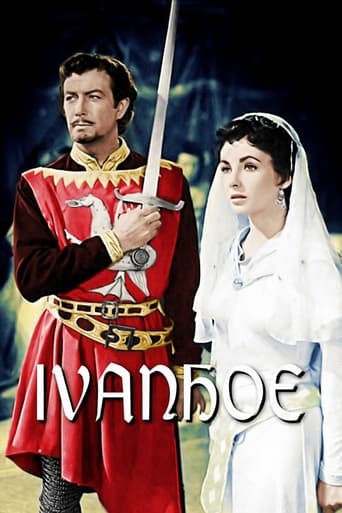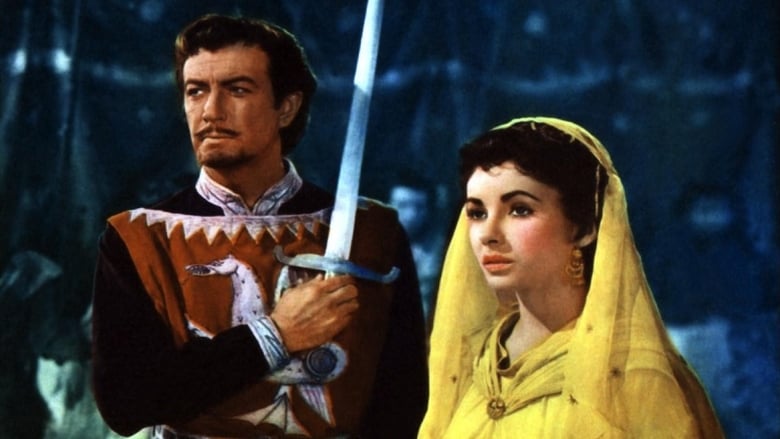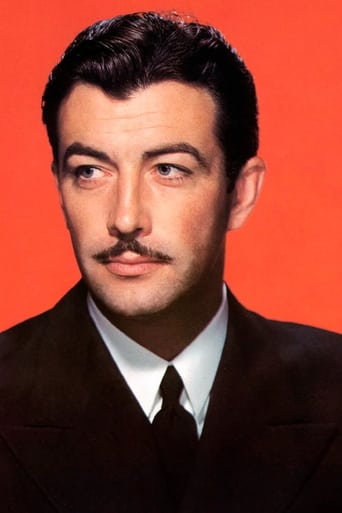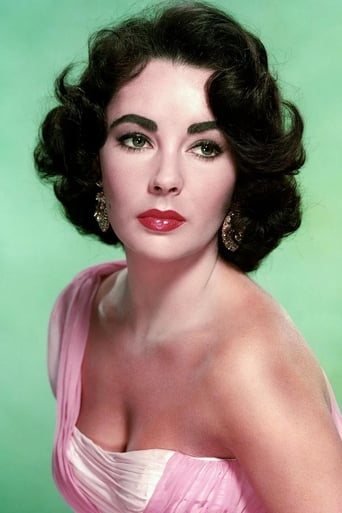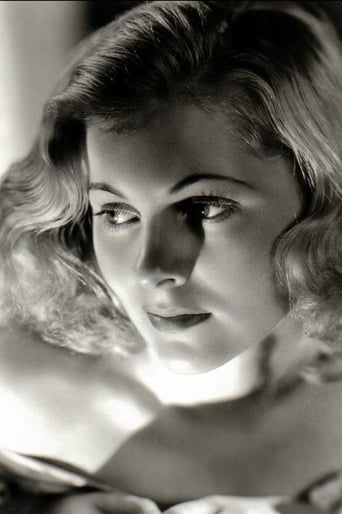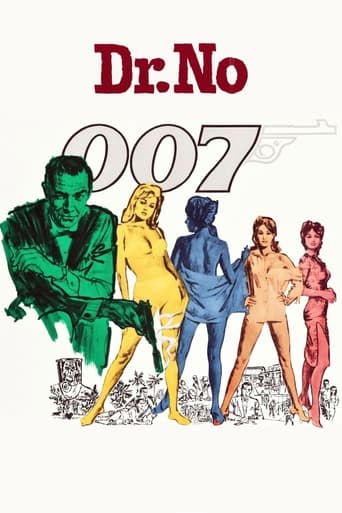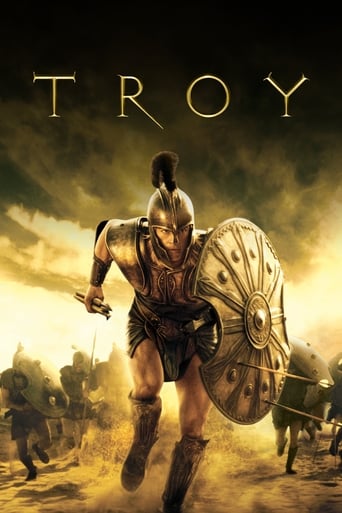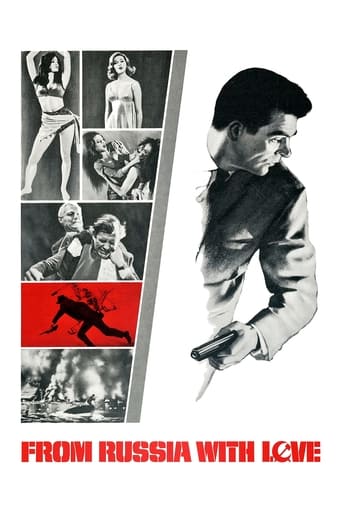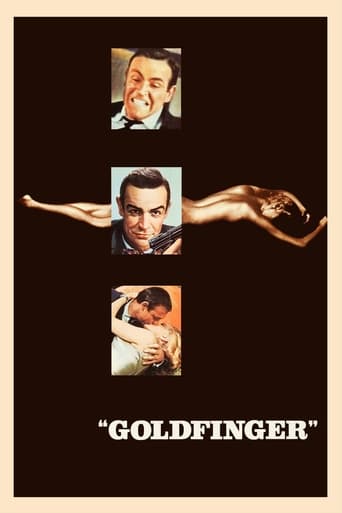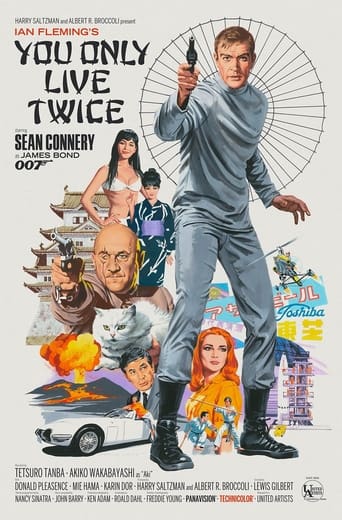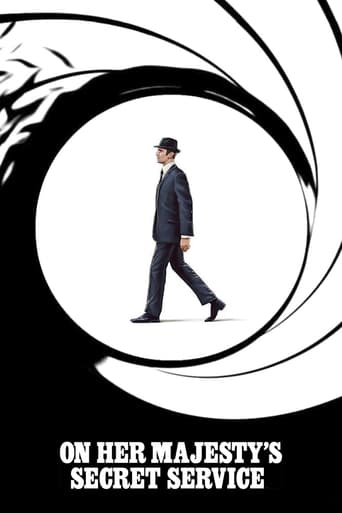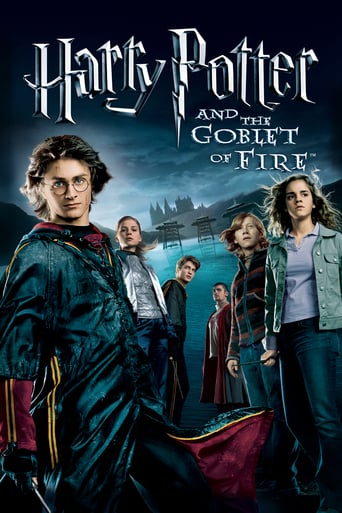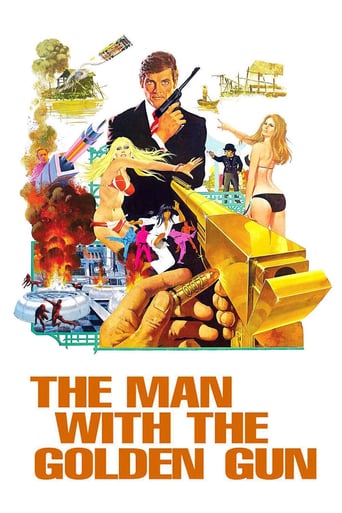Ivanhoe (1952)
Sir Walter Scott's classic story of the chivalrous Ivanhoe who joins with Robin of Locksley in the fight against Prince John and for the return of King Richard the Lionheart.
Watch Trailer
Cast


Similar titles
Reviews
Singing coach for Mr Taylor: Arthur Rosenstein. Archery coach: Colonel John M.T.F. Churchill. Produced by Pandro S. Berman at M-G-M's Elstree Studios in England and on location in Hatfield Woods. Copyright 30 June 1952 by Loew's Inc. A Metro-Goldwyn-Mayer picture. New York opening at the Radio City Music Hall: 31 July 1952 (ran 8 weeks). U.S. release: 20 February 1953 (sic). U.K. release: 13 September 1952. Australian release: 15 August 1952. 9,595 feet. 106 minutes. (Available on an excellent Warner DVD).NOTES: Nominated for the following prestigious Hollywood awards: Best Picture (won by The Greatest Show On Earth), Color Cinematography (won by The Quiet Man), Music Scoring of a Drama or Comedy (won by High Noon). With gross rentals of $6.3 million, number 4 at U.S./Canadian ticket windows for 1952. The film also took the number 4 position at the U.K. box-office. Perhaps because it was released for the winter-spring school holidays, the movie did far less business in Australia, though it did come in at the latter end of the top fifty box-office successes.COMMENT: The general impression that Ivanhoe is a schoolboy's movie is not borne out by the film itself. Crammed full of violent, exciting action in a fast-paced plot set in motion by a wonderfully dastardly trio of villains - superbly characterized by George Sanders, Robert Douglas and Guy Rolfe - Ivanhoe has been produced on a splendidly lavish scale that often staggers the senses. This is not to say that the actors are overwhelmed by pageant and panoply (though they do skilfully stand aside whilst hundreds of stuntmen do yeomen service in the many battle and siege scenes). True, Robert Taylor sometimes looks a trifle uncomfortable and out-of-place in medieval armor, but this clumsiness is due more to Thorpe's lack of competence in camera placement than to any deficiency of charisma on Taylor's part. Mostly he performs his chores with such dash, we forget his incongruous American accent. It's British-born Elizabeth Taylor who seems to have the wrong voice for the part (though she looks the beauty well enough).
MGM shot Ivanhoe in Britain and gone for that old fashioned Hollywood adventure in the same vein as Errol Flynn's Robin Hood but less successfully.Baddie Prince John is scheming for the throne of England as his brother King Richard is held for ransom.It is an amiable rip roaring adventure, Walter Scott's classic story is distilled, Robert Taylor is too stiff as the Saxon knight who dislikes the Normans. Elizabeth Taylor and Joan Fontaine provide the allure as two women of different faiths that have fallen for him.George Sanders is the hissable villain, the champion knight of King John but his love for Jewish Rebecca is sincere. Guy Rolfe is having a hoot as the despicable King John.The film was made in 1952 and there is some allusion to McCarthyism.
Made in 1952 when the studio system under irresistible pressure from television and was in terminal decline and beginning to fall falling apart.Along came Ivanhoe from then top old studio MGM. MGM's version of the old Victorian novel by the Scottish romantic writer Sir Walter Scott (Published In 1820). Is often compared with Warner's 1938 classic Robin Hood with Errol Flynn, and indeed the substance and the subject are indeed very similar.Now i am not going to try to argue that Ivanhoe is the better film clearly to all it is not.However given that Taylor (Robert)is no Flynn (Errol) and most of the supporting cast lack the charisma of the 1938 Warner film on most other considerations, however Ivanhoe compares quite favourably in my opinion.The colour is three strip Technicolour,the music by NIklos Rozna is in every way superb and so very profound in the film. Robert Taylor is very convincing as the heroic noble traditional hero "Ivanhoe", his nemesis played with some panache and some notable grace by that stalwart of Hollywood English rogue-ism by the wonderful George Sanders excels. The castle in the film is a full scale mock up and is very impressive complete with moat.Please look carefully at the stunt men throughout the film all are amazing but one particular fall into a moat from a great height had me quickly reaching for the remote. A personal delight from this movie is poor King John, sorry only a prince, cast as ever in a Hollywood film as lecherous, now here he is played by Guy Rolfe a British actor who worked later mostly on TV and his villainous loathsome sneers are just brilliant. The Freddie Young photography is marvellous and colourful, the action fast and perfectly thoughtless, the film is after all a Hollywood period fantasy. The film does however have it's low points, almost all concerning Elizabeth Taylor, she is dreadful throughout the film. Was she bored, going through a bad patch at the time, whatever but she seems to have no interest in the film or her role and boy does it show.In all, then a very entertaining film from the very last of old Hollywood and as such i believe it is one to savour.
The first Ivanhoe I ever saw was the remake made in 1982 with Anthony Andrews and Olivia Hussey. But it was the 1952 classic that I saw some time later, during the Easter holiday, the one that took a place in my heart forever. I saw the 1982 version again a few months ago just to compare, and although it is not only more faithful to Sir Walter Scott's original but the art direction is credibly accurate on its depiction of the world of the 12th century. Those cold and dark castle interiors with bare walls always oozing damp, and the inevitable dirt in which people lived in. Nevertheless, the cleaner, innocent and colourful 1952 original is the definitive version for me. Robert Taylor is with no doubt one of the most underrated actors of all time, but although it is true that he was not a big talent he still left us a few memorable roles in which he showed he could act: "Waterloo Bridge", "Party Girl", "The Law and Joe Wade" and so. But he never was taken seriously and remained tied up to the studio system for twenty- five years (longer than any other actor in history) and also holds the record of being the lowest-paid leading actor of his era. Surely he was aware of that, and that was the reason why he always took any role he was given, whether he liked it or not. We know now that the "medieval trilogy" was something he never liked to do. After making "Ivanhoe" and hating the uncomfortable armours and chain-nail outfits he had to wear throughout most of the film, he would have been more than glad never to repeat the experience. But the enormous commercial success of the film, partly due to the actor's popularity, led the studio to make a second and then a third film. And poor old Bob had to go along with it and suffer the torments of the "iron suspenders" many more times. Ironically, as it often happens, these three films he disliked so much making and he thought would do nothing positive for his career, discovered him to a younger generation of audiences in whose memory he would remain forever. Much has been said by critics and fans of the novel as to the fact that Taylor was too old to play the title role because he was forty, while in the novel the character is in his mid-twenties. I think he is credible in the role, and acquits himself quite well in the sword fighting scenes. And he certainly passes well as the son of Finlay Currie, who then was in his seventies. A twenty-something year-old lad would have rather looked his grandson instead. The movie has everything that a cloak-and-dagger adventure lover could ask for: sword fights by the dozen, dastardly villains in impregnable castles, maidens in distress, political intrigue, treason, an exciting and tense siege to a castle, and one of the most memorable and spectacular tournament sequences in movie history. All right, you can tell that the lances look so light that they were probably made of plastic, like most of the armours, and the castle interiors are obviously studio sets. And then there is a monumental goof that always makes me smile: when Robert Taylor gets the SOS letter from King Richard in Austria at the beginning of the film, he seeks the help of a local monk to translate the letter to him because, he says, "I read no Austrian". A second later, we see the letter in a POV shot as the monk translates it for Taylor and it is written in English! Richard Plantagenet was of French origin, and French was the language of the court, since Saxon was only spoken by the noble natives and the peasants and English as we know it today didn't exist yet. So the letter should be written in French. And besides, there is not such a thing as Austrian language; they speak German. I can't imagine how this mistake could have been made by the screenwriter and overlooked when they shot the scene. Obviously, most of audiences would never realise the error anyway. But nevertheless, it is a big one. And finally, we have Miklos Rozsa's fantastic and memorable score, which was nominated for an Academy Award and is one of the best he ever created. It is one of the things that are inevitable linked to the film, for it is spectacular, lyrical and romantic all at the same time. A true masterpiece of film music and one of the things the movie is always best remembered for. "Ivanhoe" was also nominated for Best Colour Cinematography, which eventually went to "The Quiet Man", and, most surprisingly, for Best Film. That was going a bit over the top, and had it won it would undoubtedly be one of the oddest winners in the history of the Academy Awards.

